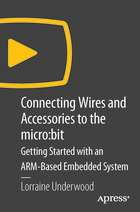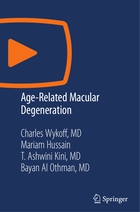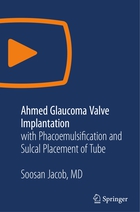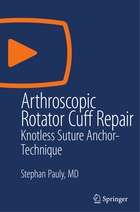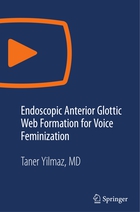Browse Person - 9 results
Sort
SN Video Coding and Web Development, Overview
presented by Lorraine Underwood, fl. 2008; produced by Springer Nature, in SN Video Coding and Web Development (London, England and Berlin State: Springer Nature, 2019), 1 min
Learn multiple ways to connect different types of wires to the micro:bit. This video shows you how to use items found in a typical hardware store, therefore making all its methods accessible to the average person. There is no soldering involved. The methods demonstrated include using: Alligator clips Jumper wires...
Sample
presented by Lorraine Underwood, fl. 2008; produced by Springer Nature, in SN Video Coding and Web Development (London, England and Berlin State: Springer Nature, 2019), 1 min
Description
Learn multiple ways to connect different types of wires to the micro:bit. This video shows you how to use items found in a typical hardware store, therefore making all its methods accessible to the average person. There is no soldering involved. The methods demonstrated include using: Alligator clips Jumper wires Banana plugs Nuts and bolts Ring crimp terminals. In this video, you will cover the advantages and disadvantages of each method, as wel...
Learn multiple ways to connect different types of wires to the micro:bit. This video shows you how to use items found in a typical hardware store, therefore making all its methods accessible to the average person. There is no soldering involved. The methods demonstrated include using: Alligator clips Jumper wires Banana plugs Nuts and bolts Ring crimp terminals. In this video, you will cover the advantages and disadvantages of each method, as well as see code samples that demonstrate how data is transferred from different accessories to the micro:bit. The micro:bit edge connector gives you access to five pins: three input and output pins and two pins for powering other devices. This allows you to add lots of extra accessories such as buttons, lights and motors to the micro:bit. There are many edge connector breakout boards available for adding accessories to the micro:bit available commercially at an extra cost.
What You'll Learn: Connect wires to the micro:bit using multiple methods. Code the micro:bit to use external accessories.
Who This Video Is For:
Viewers of any skill and experience level. The typical viewer does not need any specific skills except being able to follow instructions and knowing how to use a computer. For ease of use you may want to use specific tools like a wire stripper and a crimper, but these are not required.
Show more
Show less
Field of Study
Education
Content Type
Instructional material
Contributor
Springer Nature
Author / Creator
Lorraine Underwood, fl. 2008
Date Published / Released
2019
Publisher
Springer Nature
Series
SN Video Coding and Web Development
Copyright Message
Copyright © 2019 Springer Nature
×
SN Video Coding and Web Development, Part I. Connecting Wires and Accessories to the micro:bit
presented by Lorraine Underwood, fl. 2008; produced by Springer Nature, in SN Video Coding and Web Development (London, England and Berlin State: Springer Nature, 2019), 27 mins
Learn multiple ways to connect different types of wires to the micro:bit. This video shows you how to use items found in a typical hardware store, therefore making all its methods accessible to the average person. There is no soldering involved. The methods demonstrated include using: Alligator clips Jumper wires...
Sample
presented by Lorraine Underwood, fl. 2008; produced by Springer Nature, in SN Video Coding and Web Development (London, England and Berlin State: Springer Nature, 2019), 27 mins
Description
Learn multiple ways to connect different types of wires to the micro:bit. This video shows you how to use items found in a typical hardware store, therefore making all its methods accessible to the average person. There is no soldering involved. The methods demonstrated include using: Alligator clips Jumper wires Banana plugs Nuts and bolts Ring crimp terminals. In this video, you will cover the advantages and disadvantages of each method, as wel...
Learn multiple ways to connect different types of wires to the micro:bit. This video shows you how to use items found in a typical hardware store, therefore making all its methods accessible to the average person. There is no soldering involved. The methods demonstrated include using: Alligator clips Jumper wires Banana plugs Nuts and bolts Ring crimp terminals. In this video, you will cover the advantages and disadvantages of each method, as well as see code samples that demonstrate how data is transferred from different accessories to the micro:bit. The micro:bit edge connector gives you access to five pins: three input and output pins and two pins for powering other devices. This allows you to add lots of extra accessories such as buttons, lights and motors to the micro:bit. There are many edge connector breakout boards available for adding accessories to the micro:bit available commercially at an extra cost.
What You'll Learn: Connect wires to the micro:bit using multiple methods. Code the micro:bit to use external accessories.
Who This Video Is For:
Viewers of any skill and experience level. The typical viewer does not need any specific skills except being able to follow instructions and knowing how to use a computer. For ease of use you may want to use specific tools like a wire stripper and a crimper, but these are not required.
Show more
Show less
Field of Study
Education
Content Type
Instructional material
Contributor
Springer Nature
Author / Creator
Lorraine Underwood, fl. 2008
Date Published / Released
2019
Publisher
Springer Nature
Series
SN Video Coding and Web Development
Copyright Message
Copyright © 2019 Springer Nature
Segments
×
SN Video Coding and Web Development, Part II. Connecting Wires and Accessories to the micro:bit: Coding
presented by Lorraine Underwood, fl. 2008; produced by Springer Nature, in SN Video Coding and Web Development (London, England and Berlin State: Springer Nature, 2019), 12 mins
Learn multiple ways to connect different types of wires to the micro:bit. This video shows you how to use items found in a typical hardware store, therefore making all its methods accessible to the average person. There is no soldering involved. The methods demonstrated include using: Alligator clips Jumper wires...
Sample
presented by Lorraine Underwood, fl. 2008; produced by Springer Nature, in SN Video Coding and Web Development (London, England and Berlin State: Springer Nature, 2019), 12 mins
Description
Learn multiple ways to connect different types of wires to the micro:bit. This video shows you how to use items found in a typical hardware store, therefore making all its methods accessible to the average person. There is no soldering involved. The methods demonstrated include using: Alligator clips Jumper wires Banana plugs Nuts and bolts Ring crimp terminals. In this video, you will cover the advantages and disadvantages of each method, as wel...
Learn multiple ways to connect different types of wires to the micro:bit. This video shows you how to use items found in a typical hardware store, therefore making all its methods accessible to the average person. There is no soldering involved. The methods demonstrated include using: Alligator clips Jumper wires Banana plugs Nuts and bolts Ring crimp terminals. In this video, you will cover the advantages and disadvantages of each method, as well as see code samples that demonstrate how data is transferred from different accessories to the micro:bit. The micro:bit edge connector gives you access to five pins: three input and output pins and two pins for powering other devices. This allows you to add lots of extra accessories such as buttons, lights and motors to the micro:bit. There are many edge connector breakout boards available for adding accessories to the micro:bit available commercially at an extra cost.
What You'll Learn: Connect wires to the micro:bit using multiple methods. Code the micro:bit to use external accessories.
Who This Video Is For:
Viewers of any skill and experience level. The typical viewer does not need any specific skills except being able to follow instructions and knowing how to use a computer. For ease of use you may want to use specific tools like a wire stripper and a crimper, but these are not required.
Show more
Show less
Field of Study
Education
Content Type
Instructional material
Contributor
Springer Nature
Author / Creator
Lorraine Underwood, fl. 2008
Date Published / Released
2019
Publisher
Springer Nature
Series
SN Video Coding and Web Development
Copyright Message
Copyright © 2019 Springer Nature
×
SN Video Medicine and Life Sciences, Age-Related Macular Degeneration
produced by Springer Nature; interview by Mariam Hussain, fl. 2019, in SN Video Medicine and Life Sciences (London, England and Berlin State: Springer Nature, 2019), 14 mins
Age-related macular degeneration (AMD), if left untreated, is the most common cause of vision loss in people over 50 years older in the US. Patients may have attributed their vision loss to comorbid ocular pathology, such as cataracts. Previously, neovascular AMD often progressed from one eye to the other and caus...
Sample
produced by Springer Nature; interview by Mariam Hussain, fl. 2019, in SN Video Medicine and Life Sciences (London, England and Berlin State: Springer Nature, 2019), 14 mins
Description
Age-related macular degeneration (AMD), if left untreated, is the most common cause of vision loss in people over 50 years older in the US. Patients may have attributed their vision loss to comorbid ocular pathology, such as cataracts. Previously, neovascular AMD often progressed from one eye to the other and caused great loss of function in the patient. This video covers topics unique to this phenomena that physician and students should know. T...
Age-related macular degeneration (AMD), if left untreated, is the most common cause of vision loss in people over 50 years older in the US. Patients may have attributed their vision loss to comorbid ocular pathology, such as cataracts. Previously, neovascular AMD often progressed from one eye to the other and caused great loss of function in the patient. This video covers topics unique to this phenomena that physician and students should know. Topics include treatment options that greatly reduce the risk of vision loss, present lower costs, the pros and cons of drugs, and other considerations. The videos also cover the limited evidence currently available, prognosis for better treatment options in the future, and patient perceptions on AMD based on common misconceptions and misinformation.
Show more
Show less
Field of Study
Nursing
Content Type
Interview
Contributor
Springer Nature
Author / Creator
Mariam Hussain, fl. 2019
Date Published / Released
2019
Publisher
Springer Nature
Series
SN Video Medicine and Life Sciences
Person Discussed
Charles C. Wykoff, fl. 2010
Topic / Theme
Gerontology
Copyright Message
Copyright © 2019 Springer Nature
×
SN Video Medicine and Life Sciences, Ahmed Glaucoma Valve Implantation
presented by Soosan Jacob, fl. 2013; produced by Springer Nature, in SN Video Medicine and Life Sciences (London, England and Berlin State: Springer Nature, 2019), 14 mins
This video walks the viewer through all the steps in the placement of an Ahmed glaucoma valve with the tube passed into the posterior chamber through the sulcus. This is possible in a pseudophakic eye and has the advantage of preventing possible corneal endothelial decompensation secondary to tube-corneal touch. P...
Sample
presented by Soosan Jacob, fl. 2013; produced by Springer Nature, in SN Video Medicine and Life Sciences (London, England and Berlin State: Springer Nature, 2019), 14 mins
Description
This video walks the viewer through all the steps in the placement of an Ahmed glaucoma valve with the tube passed into the posterior chamber through the sulcus. This is possible in a pseudophakic eye and has the advantage of preventing possible corneal endothelial decompensation secondary to tube-corneal touch. Posterior chamber tube insertion may also be performed by combining surgery with phacoemulsification in older patients with lens changes...
This video walks the viewer through all the steps in the placement of an Ahmed glaucoma valve with the tube passed into the posterior chamber through the sulcus. This is possible in a pseudophakic eye and has the advantage of preventing possible corneal endothelial decompensation secondary to tube-corneal touch. Posterior chamber tube insertion may also be performed by combining surgery with phacoemulsification in older patients with lens changes.
The video demonstrates use of the patient’s own scleral flap to cover the tube, though it is also possible to use preserved sclera or pericardium for this purpose. Fibrin glue is then carefully used to close the edges of the conjunctiva, ensuring that none passes posteriorly into the sub-Tenon’s space. Video segments also discuss priming of the valve, conjunctival peritomy, sub-Tenon dissection, and how to suture the valve plate. The final segments of the video detail how to trim the tube and the insertion of the tube into the posterior chamber, as well as how to anchor the tube to the sclera via a stay suture, and best practices to closing the scleral flap and conjunctiva.
Show more
Show less
Field of Study
Nursing
Content Type
Instructional material
Contributor
Springer Nature
Author / Creator
Soosan Jacob, fl. 2013
Date Published / Released
2019
Publisher
Springer Nature
Series
SN Video Medicine and Life Sciences
Topic / Theme
Practice Compliance, Surgical Care
Copyright Message
Copyright © 2019 Springer Nature
Segments
×
SN Video Medicine and Life Sciences, Arthroscopic Rotator Cuff Repair
presented by Stephan Pauly, fl. 2008; produced by Springer Nature, in SN Video Medicine and Life Sciences (London, England and Berlin State: Springer Nature, 2019), 11 mins
This video demonstrates the application of a knotless double-row repair technique of the rotator cuff. All technical aspects of the procedure are covered, such as patient preparation and positioning, portal placement, anchor positioning, tendon perforation and suture management. In addition, a brief introduction i...
Sample
presented by Stephan Pauly, fl. 2008; produced by Springer Nature, in SN Video Medicine and Life Sciences (London, England and Berlin State: Springer Nature, 2019), 11 mins
Description
This video demonstrates the application of a knotless double-row repair technique of the rotator cuff. All technical aspects of the procedure are covered, such as patient preparation and positioning, portal placement, anchor positioning, tendon perforation and suture management. In addition, a brief introduction is provided on the evolution of open and arthroscopic double-row techniques. The video will be of value for all who perform arthroscopic...
This video demonstrates the application of a knotless double-row repair technique of the rotator cuff. All technical aspects of the procedure are covered, such as patient preparation and positioning, portal placement, anchor positioning, tendon perforation and suture management. In addition, a brief introduction is provided on the evolution of open and arthroscopic double-row techniques. The video will be of value for all who perform arthroscopic rotator cuff repairs.
Show more
Show less
Field of Study
Nursing
Content Type
Instructional material
Contributor
Springer Nature
Author / Creator
Stephan Pauly, fl. 2008
Date Published / Released
2019
Publisher
Springer Nature
Series
SN Video Medicine and Life Sciences
Topic / Theme
Surgical Care
Copyright Message
Copyright © 2019 Springer Nature
×
SN Video Medicine and Life Sciences, Combined Staged Telo-velar and Trans-choroidaI Approach to a Tumor of the Sylvian Aqueduct
presented by Giuseppe Cinalli, fl. 2000; produced by Springer Nature, in SN Video Medicine and Life Sciences (London, England and Berlin State: Springer Nature, 2019), 34 mins
The video describes the staged resection of a midbrain ganglioglioma growing into the sylvian aqueduct, bulging downward into the fourth ventricle and upward into the third ventricle. The lesion had been diagnosed and treated four years earlier in another institution, but the tumor grew over the time and the ped...
Sample
presented by Giuseppe Cinalli, fl. 2000; produced by Springer Nature, in SN Video Medicine and Life Sciences (London, England and Berlin State: Springer Nature, 2019), 34 mins
Description
The video describes the staged resection of a midbrain ganglioglioma growing into the sylvian aqueduct, bulging downward into the fourth ventricle and upward into the third ventricle. The lesion had been diagnosed and treated four years earlier in another institution, but the tumor grew over the time and the pediatric patient was referred to our department for surgical treatment. Due to the tumor dumbbell appearance, one-stage resection was co...
The video describes the staged resection of a midbrain ganglioglioma growing into the sylvian aqueduct, bulging downward into the fourth ventricle and upward into the third ventricle. The lesion had been diagnosed and treated four years earlier in another institution, but the tumor grew over the time and the pediatric patient was referred to our department for surgical treatment. Due to the tumor dumbbell appearance, one-stage resection was considered too dangerous and therefore a staged resection in two procedures was planned. Telo-velar approach allowed for removal of approximately 2/3 of the lesion.
Show more
Show less
Field of Study
Nursing
Content Type
Instructional material
Contributor
Springer Nature
Author / Creator
Giuseppe Cinalli, fl. 2000
Date Published / Released
2019
Publisher
Springer Nature
Series
SN Video Medicine and Life Sciences
Copyright Message
Copyright © 2019 Springer Nature
×
SN Video Medicine and Life Sciences, Deep Anterior Lamellar Keratoplasty
presented by Soosan Jacob, fl. 2013; produced by Springer Nature, in SN Video Medicine and Life Sciences (London, England and Berlin State: Springer Nature, 2019), 15 mins
Deep anterior lamellar keratoplasty (DALK) is a surgical procedure for removing the corneal stroma down to deep stroma, Pre-Descemet’s layer, Descemet’s membrane and endothelium. It is most useful for the treatment of corneal disease in the setting of a normally functioning endothelium. Traditionally, penetrat...
Sample
presented by Soosan Jacob, fl. 2013; produced by Springer Nature, in SN Video Medicine and Life Sciences (London, England and Berlin State: Springer Nature, 2019), 15 mins
Description
Deep anterior lamellar keratoplasty (DALK) is a surgical procedure for removing the corneal stroma down to deep stroma, Pre-Descemet’s layer, Descemet’s membrane and endothelium. It is most useful for the treatment of corneal disease in the setting of a normally functioning endothelium. Traditionally, penetrating keratoplasty (PK), which involves a full-thickness corneal graft, has been the treatment of choice for corneal stromal diseases. Bu...
Deep anterior lamellar keratoplasty (DALK) is a surgical procedure for removing the corneal stroma down to deep stroma, Pre-Descemet’s layer, Descemet’s membrane and endothelium. It is most useful for the treatment of corneal disease in the setting of a normally functioning endothelium. Traditionally, penetrating keratoplasty (PK), which involves a full-thickness corneal graft, has been the treatment of choice for corneal stromal diseases. But PK can be complicated by graft rejection, irregular astigmatism and corneal opacification, thus resulting in visual impairment. DALK offers an alternative procedure that may lessen those risks because the recipient Descemet’s membrane and endothelium are preserved. At the same time, DALK carries the advantage of avoiding an open sky situation.
This video opens with an overview of the procedure: when DALK is necessary and the types of surgical techniques that can be used. Big-bubble and manual dissection DALK are then explained in detail, and viewers are walked step-by-step through each procedure. The final segments of the video show viewers how to prepare the donor cornea and technique to suturing the donor graft to the eye.
Show more
Show less
Field of Study
Nursing
Content Type
Instructional material
Contributor
Springer Nature
Author / Creator
Soosan Jacob, fl. 2013
Date Published / Released
2019
Publisher
Springer Nature
Series
SN Video Medicine and Life Sciences
Topic / Theme
Surgical Care
Copyright Message
Copyright © 2019 Springer Nature
×
SN Video Medicine and Life Sciences, Endoscopic Anterior Glottic Web Formation for Voice Feminization
presented by Taner Yilmaz, 1966-; produced by Springer Nature, in SN Video Medicine and Life Sciences (London, England and Berlin State: Springer Nature, 2019), 12 mins
This video presents the endoscopic procedure of anterior glottic web formation for the purpose of voice feminization in male-to-female transsexuals, males with testicular feminization who were raised as females, and females with constitutional androphonia. The technique involves stripping the anterior one-third to...
Sample
presented by Taner Yilmaz, 1966-; produced by Springer Nature, in SN Video Medicine and Life Sciences (London, England and Berlin State: Springer Nature, 2019), 12 mins
Description
This video presents the endoscopic procedure of anterior glottic web formation for the purpose of voice feminization in male-to-female transsexuals, males with testicular feminization who were raised as females, and females with constitutional androphonia. The technique involves stripping the anterior one-third to one-half of both membranous vocal folds followed by suturing of the denuded vocal folds, and all steps are clearly described and illus...
This video presents the endoscopic procedure of anterior glottic web formation for the purpose of voice feminization in male-to-female transsexuals, males with testicular feminization who were raised as females, and females with constitutional androphonia. The technique involves stripping the anterior one-third to one-half of both membranous vocal folds followed by suturing of the denuded vocal folds, and all steps are clearly described and illustrated in this video. Among the available surgical options for voice feminization, anterior glottic web formation affords various advantages, including endoscopic surgery without skin incision or scar, outpatient surgery, potential reversibility, and low risk for vocal fold and airway damage. One possible disadvantage is difficulty of the suturing technique, and the video will assist in overcoming this challenge. Some patients complain of inability to raise the intensity of their voice postoperatively, so it is to be borne in mind that while anterior glottic web formation is generally a successful option, additional surgery is occasionally necessary to achieve patient satisfaction.
Show more
Show less
Field of Study
Nursing
Content Type
Instructional material
Contributor
Springer Nature
Author / Creator
Taner Yilmaz, 1966-
Date Published / Released
2019
Publisher
Springer Nature
Series
SN Video Medicine and Life Sciences
Copyright Message
Copyright © 2019 Springer Nature
×

